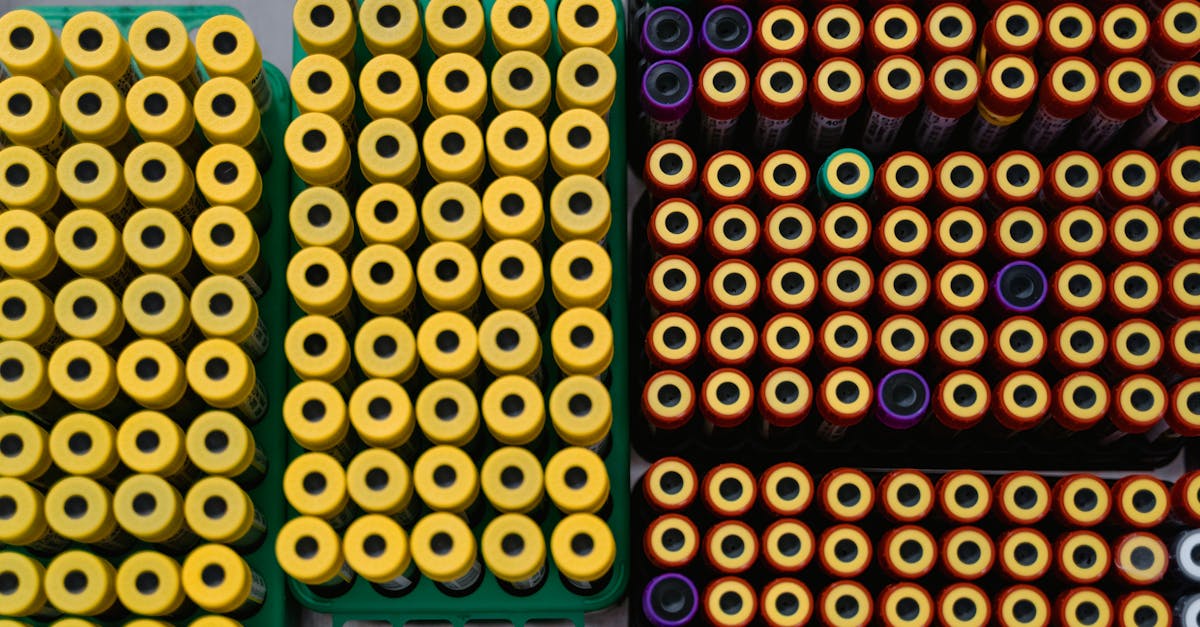
Common Challenges in Case History Collection
Table Of Contents
Dealing with Incomplete or Inaccurate Records
Incomplete or inaccurate records pose significant hurdles during case history collection. These inconsistencies can stem from various factors, including human error, miscommunication, or outdated documentation methods. The reliability of the case history is only as strong as the data it contains. When details are missing or incorrect, they can compromise the quality of insights generated from the collected information.
Addressing these issues requires a proactive approach to ensure the information gathered is both comprehensive and precise. Implementing systematic checks can aid in identifying gaps in the data early on. This might involve cross-referencing multiple sources of information or conducting follow-up interviews with participants. By investing time in validating the existing records, professionals can enhance the overall integrity of the case history and facilitate more accurate assessments.
Techniques for Validating Information
Validating information collected during case history compilation is crucial to ensure accuracy and reliability. One effective technique involves cross-referencing data against multiple reputable sources. This could include medical records, government databases, or previous case files. Interviewing individuals who have a direct connection to the case can also provide insight. Their perspectives can either confirm or challenge the existing information, offering a broader view of the circumstances.
Another method for validation is implementing structured questionnaires that follow consistent formats. These tools promote uniformity in responses and make it easier to analyse the data for discrepancies. Using technology can enhance this process as well; digital platforms can store and organise data, allowing for quick assessments. It is also beneficial to train staff on recognising signs of inconsistencies and understanding how to probe further when necessary.
Managing Time Constraints
Time pressure often complicates the case history collection process. Professionals frequently face tight deadlines, making it crucial to optimise every step of the collection. Effective prioritisation of tasks and organisation can significantly improve efficiency. By identifying key information and focusing on high-priority cases, practitioners can maximise productivity and ensure important details aren't overlooked.
Streamlining the collection process involves leveraging technology and tools to save time. Digital forms and online questionnaires can facilitate easier data entry and faster responses. Implementing a cohesive strategy that includes pre-collection planning helps outline specific goals and necessary resources. This approach not only reduces the time spent gathering caseloads but also enhances the overall quality of the data obtained.
Streamlining the Collection Process
Efficient case history collection relies heavily on a well-structured process. Clear guidelines for data collection can help minimise confusion. Using standardised forms simplifies the task for both collectors and participants. Digital tools and applications can facilitate faster data entry and retrieval, helping streamline workflows. Automating notifications and reminders for participants ensures timely responses. This proactive approach can significantly enhance the pace of information gathering.
Another critical aspect involves training the team responsible for collecting data. Providing them with thorough instructions on best practices promotes consistency. Encouraging open communication within the team allows for quick resolution of any arising issues. Regular feedback sessions can identify potential bottlenecks, enabling ongoing improvements to the process. Overall, increasing efficiency in case history collection ultimately supports better outcomes for both practitioners and participants.
Engaging Participants Effectively
Successful engagement of participants hinges on establishing a genuine connection. Building trust is essential in fostering open communication. Participants are more likely to share accurate and comprehensive information when they feel respected and understood. Taking the time to listen actively, while also addressing their concerns and inquiries, can create a more comfortable atmosphere. This approach encourages a collaborative environment where participants feel valued.
Maintaining an approachable demeanor can significantly enhance interactions. Creating an inclusive setting allows participants to express themselves freely during the data collection process. Using clear, straightforward language aids in breaking down barriers. Employing empathetic techniques helps in relating to participants’ experiences, which can lead to deeper insights. Ultimately, a participant-centred approach strengthens the quality of information gathered while enriching the overall experience for both parties.
Building Trust and Rapport
Establishing a comfortable environment is essential for encouraging open communication with participants. When individuals feel secure and respected, they are more likely to share sensitive information. Taking the time to listen actively to their concerns shows genuine interest in their experiences. This approach lays the groundwork for a constructive relationship that may lead to more accurate and comprehensive case histories.
Utilising empathetic communication can significantly enhance the interaction. Acknowledging participants' feelings and experiences fosters a sense of connection. Simple gestures such as maintaining eye contact and using appropriate body language contribute to building this rapport. When participants recognise the effort made to understand their situation, they may become more willing to engage fully in the process.
FAQS
What are some common challenges faced in case history collection?
Common challenges include dealing with incomplete or inaccurate records, managing time constraints, and engaging participants effectively.
How can I validate the information collected during case history collection?
Techniques for validating information include cross-referencing with existing records, conducting follow-up interviews, and using standardised questionnaires.
What strategies can help in managing time constraints during the collection process?
Streamlining the collection process by preparing templates, setting clear timelines, and prioritising tasks can help manage time constraints effectively.
How important is building trust and rapport with participants in case history collection?
Building trust and rapport is crucial, as it encourages participants to provide more accurate and detailed information, leading to better-quality case histories.
Are there any specific techniques for engaging participants during the case history collection?
Techniques include active listening, showing empathy, and creating a comfortable environment for participants to share their experiences.
Related Links
Strategies for Building Rapport with Clients in InterviewsUnderstanding Client Background in Speech Assessments
Ethical Considerations in Case History Interviews
Role of Family Input in Speech and Language Assessments
Analyzing Case History Data for Better Diagnosis
Utilizing Open-Ended Questions in Speech Assessments
Gathering Relevant Information in Case History Interviews
Effective Interviewing Techniques for Speech Pathologists
Importance of Case History in Speech Pathology